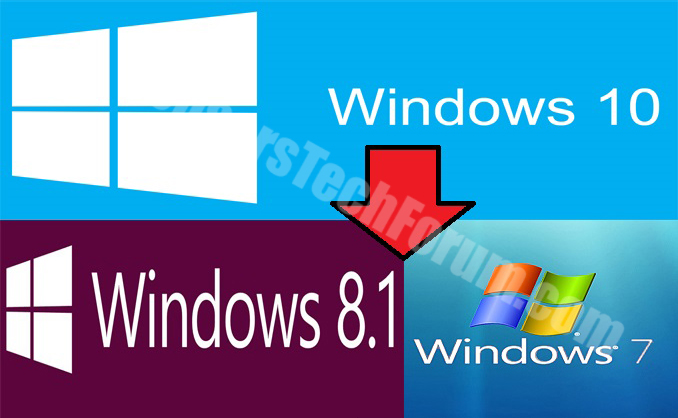Windows 10 has been around for several months now, but there are many users who still prefer running Windows 7 and 8.1. However, Microsoft may have just found what to do to increase the number of PCs running its latest version.
Security researchers at Ars Technica were the first to report that Microsoft had recently ‘made a mistake’ by checking an optional upgrade to Windows 10 as ‘default’, instead of ‘optional’. To do so, a registry change may have occurred.
This is what researcher Woody Leonhard from InfoWorld believes may have happened:
→On some PCs, KB 3083710 and KB 3083711 were changed on Tuesday (Oct 13), with their status going from optional-and-unchecked to important-and-checked. That may account for the registry change on Wednesday (Windows Update changes to the registry only “take” upon restart).
Here is the explanation given by Microsoft:
→As part of our effort to bring Windows 10 to existing genuine Windows 7 and Windows 8.1 customers, the Windows 10 upgrade may appear as an optional update in the Windows Update (WU) control panel. This is an intuitive and trusted place people go to find Recommended and Optional updates to Windows. In the recent Windows update, this option was checked as default; this was a mistake and we are removing the check.
KB 3083710 – Details and Description
According to Microsoft’s vague review of the update, it contains ‘some improvements to Windows Update Client in Windows 7 Service Pack 1 (SP1) and Windows Server 2008 R2 SP1’. Also, the update replaces a previously released update – KB3083324, which has the same description. Not surprisingly, KB3083324 replaces the August 2015 Windows Update Client update KB3075851… which replaces KB3065987 from July. All of the updates contain ‘some improvements to Windows Update Client in Windows 7 Service Pack 1 (SP1) or Windows Server 2008 R2 SP1’.
Next on the list is KB3050265 which was incompatible with Windows Server Update Services (WSUS) servers without the hardening update KB2938066. KB3050265 replaced the KB2990214. The KB2990214 update ‘enables you to upgrade your computer from Windows 7 Service Pack 1 (SP1) to a later version of Windows‘. Voila!
KB 3083711 – Details and Description
The official statement from Microsoft regarding the update is that it ‘contains some improvements to Windows Update Client in Windows 8.1, Windows RT 8.1, or Windows Server 2012 R2’. KB 3083711 from October 2015 is only applicable with ‘the April 2014 update rollup for Windows RT 8.1, Windows 8.1, and Windows Server 2012 R2 (2919355) installed in Windows 8.1 or Windows Server 2012 R2’. KB 3083711 replaces the 3083325 update… which (surprise, surprise) served ‘some improvements to Windows Update Client in Windows 8.1, Windows RT 8.1, or Windows Server 2012 R2’ and only works together with 2919355. 3075853 replaces 3083325, which replaces KB 3065988 from July 2015. The latter ‘allows Windows Update client to receive System Hardware Updates and System Firmware Updates from a future version of Windows Server Update Services (WSUS)‘, and replaces KB 3050267.
What is KB 3050267 for?
The update was applied to install a new Group Policy object that enables users to block upgrades to the latest version of Windows through Windows Update. The update replaced 3044374 which enabled users to upgrade their computers from Windows 8.1 to a Windows 10.
More Windows Updates to Look Out for:
Also, make sure to get to know the most frequent Windows 10 errors.
Let’s evaluate the forced upgrade to Win10 situation: For Win7 and Win8.1 users who have Automatic Update turned on, the check mark shows that Windows should start the Windows 10 upgrade. As a result of the forced updates, a sizeable operating system installer will be downloaded to the user’s machine. There were even some cases of the installer starting up directly, without asking permission or giving any indication. The force-downloading is estimated at 5GB of pre-installation files onto the system.
The misfortunate happening is just another proof of how important it is to read everything that is promoted to you – be it a legitimate OS update or the Privacy Policy of a third party software product.
The cumulative updates described above (KB 3083710 and KB 3083711), forcing the upgrade to Win10, are not to be taken lightly. Many Win7 and Win8.1 users have complained being forced to switch to Win10 without being notified in any way, or without wanting the upgrade in the first place. Even though the corporation has now fixed their mistake by reversing the checkbox, many questions still remain unanswered.
How to get rid of the Windows 10 nagware?
Woody Leonhard has illustrated a way to deal with the annoying Windows 10 message, if it is still persistent in the attempt to make you install Windows latest:
→To get rid of the “Upgrade to Windows 10” message, run GWX Control Panel, click the box to “Disable Get Windows 10 App,” then “Disable Operating System Upgrades in Windows Update.” The former option deletes and hides a cornucopia of Windows updates responsible for the festering mess. The latter option sets the registry key listed in KB 3080351 — you don’t have to manually change the registry, and it works whether or not you have the Group Policy Editor.
Let’s chat! Follow the discussion about KB 3083710 and KB 3083711 in our forum!



